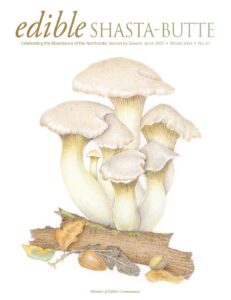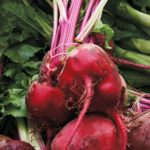
From July through September, the trees will be weighted down with juicy peaches just waiting to be hand-picked.
Photos courtesy of Hunter Orchards
As the final late spring frost lifts off Shasta Valley and the air begins to smell a little sweeter, there is an energy—a clear indicator of the arrival of peach season—that runs through the twenty acres of Hunter Orchards in Grenada. From July through September, the trees will be weighted down with juicy peaches, just waiting to be hand-picked. Every single peach will go through more than anyone knows as it transforms from flower to fruit and goes from tree to table.
Hunter Orchards wants to fulfill its promise of providing the best peaches, and we ask ourselves every year, how can we go that extra mile for the customer? To that end, Hunter Orchards continues to expand upon opportunities to provide quality service to our customers. One of the ways we do this is by staggering the peach varieties, which keeps a continual flow of peaches ripening from July through September. We also bring the peaches and other fruit to various farmers’ markets in Siskiyou County, and our peach pop-ups on the farm have become very popular. We want these peach pop-ups to become a place where you can come buy your peaches, but stay for a picnic or listen to a local band, a place where the community can come out and enjoy the farm.
FLOURISHING IN THE SHASTA VALLEY
Weather plays a big part in the size of the harvest, which can be largely out of our hands. Many people grow peaches in the Central Valley, where temperatures are very hot during the day and remain hot at night. Here, it is hot during the day, but it cools down to fifty or sixty degrees once the sun goes down, which results in a more complex sugar development and superior flavor. Many people are surprised that fruit trees, including peaches, apricots, nectarines, pears, and apples do pretty well in the Shasta Valley high desert. Many fruit trees, including peaches, have a chill requirement—a certain number of hours that the fruit must stay below 45 degrees. If this chill requirement is met too early in the season, the trees will likely bud or flower too early in the spring, and then a later cold snap could damage or kill the new buds, flowers, and potential fruit. Much care is taken to ensure the trees withstand weather fluctuations, but sometimes it is out of the farmer’s control. The most limiting factor in orchard profitability is late spring frost. Air must move easily out of the orchard to minimize serious damage from frost during bloom and early fruit development. Fortunately, part of Hunter Orchards’ peach acreage is higher in elevation, which helps reduce crop losses from spring frost. On chilly winter mornings, temperatures may fluctuate as much as ten degrees from hilltop to low-lying areas.
One of my wife Julie’s favorite things is harvesting the lavender and finding bumblebees asleep on the flowers.

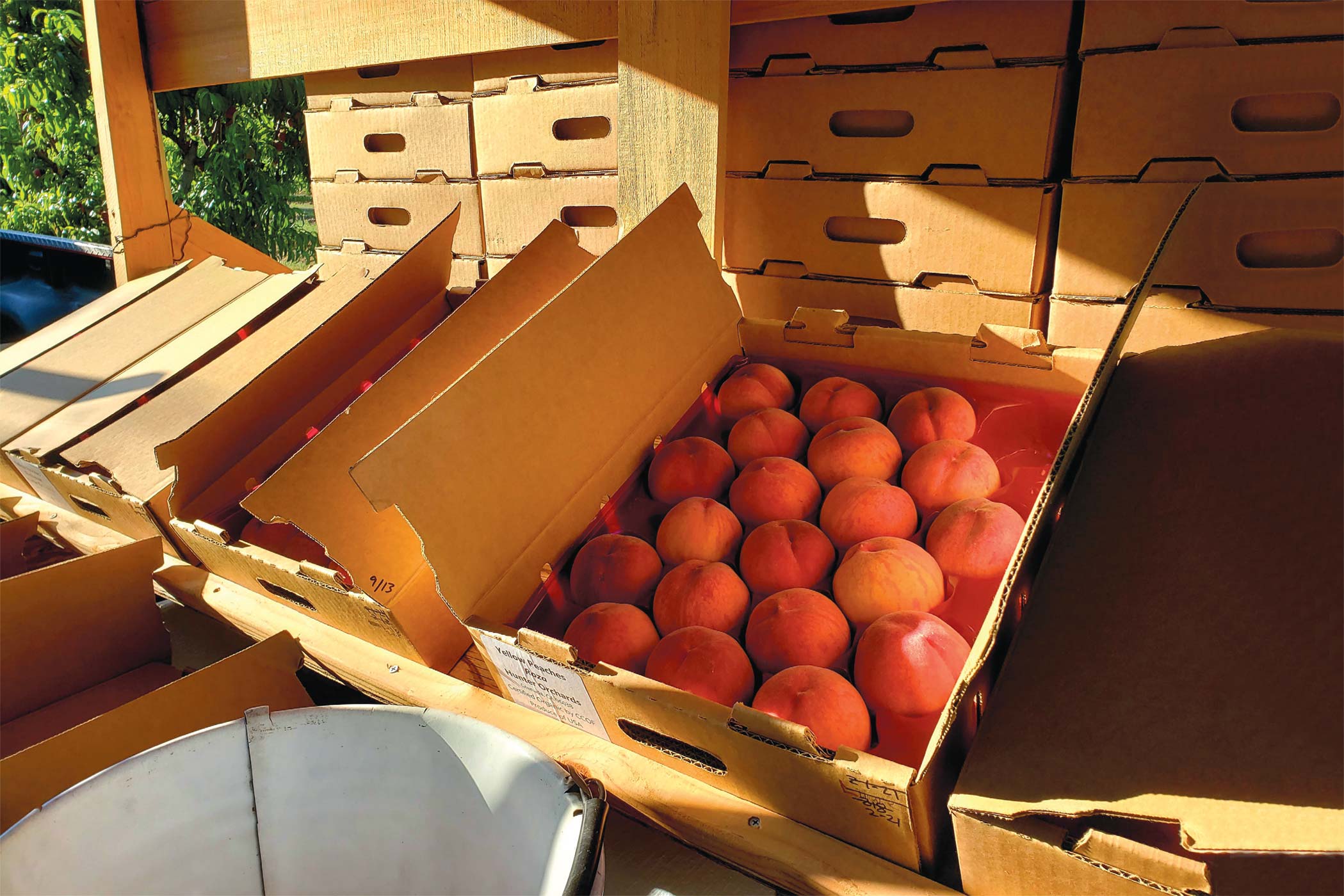
Elberta is the best tasting canning peach, and people know when they will be ready, so they call ahead and buy them by the case.
A HISTORY OF VARIETY
From very early on in the orchard’s history, several varieties of peaches were planted to ripen in sequence, which extends the harvest season. Hunter Orchards grows several varieties of peaches, including white peaches. We also grow nectarines and apricots during the summer. Our early peaches are semi-cling and good for eating, but once August arrives and the freestone varieties are ripe, customers start asking us for canning peaches. Elberta is the best tasting canning peach, and people know when they will be ready, so they call ahead and buy them by the case. Elbertas are rarely grown these days, so Hunter Orchards ensures that we grow plenty of them so that our customers can be sure they’ll have their favorite peaches to can. Hunter Orchards’ season is long and extends beyond the season in central California. By the end of the season, we are the last place in California to have peaches.
A FINE LINE
There is a fi ne line when harvesting peaches. You want the fruit to hang on the tree long enough for the flavor and sugar content to peak, but not so long that it becomes overripe. A great indicator of the correct time for picking the fruit is a simple taste test. We definitely want to taste our product before it goes to our customers. They come to us for the highest quality, and they often tell us that the peaches in the stores are almost flavorless or lack a strong peach flavor. When you bite into a Hunter Orchards peach, you get the juiciness and sweetness you remember from your childhood.
PRETTY PEST CONTROL
Because we are an organic farm, we are limited to what we can do for pest control. We have found that companion planting—growing certain plants alongside one another—is a great way to keep bugs away naturally. As an added bonus, companion planting provides a wealth of fresh herbs and flowers on top of a good-sized crop of healthy peaches. We have plans this year to plant garlic near the peach trees, which will help keep the pests away. Garlic also builds sulfur content in the soil, which acts as a natural anti-fungal and keeps the trees free of disease. We will also be planting chamomile, which will add nutrients to the soil and serve as a natural fertilizer. Hunter Orchards has grown lavender as a companion plant for peach trees for over twenty years. This aromatic plant is an excellent companion for almost any plant, but especially for peach trees. The smell of lavender combined with the scent of peaches makes for an amazingly intoxicating scent that lasts from morning to night in the summer.
Lavender is a hardy perennial with a high resin content, which means that its leaves and flowers are usually too tough and oily to be of interest to pests like squirrels. Additionally, their fragrant purple flowers appeal to beneficial insects like bees. We do keep the lavender away from the peach root zone because we know that if you plant anything directly under the leaf canopy, it will compete with the fruit tree for nutrients. While peaches require a bit of watering, lavender prefers mostly dry conditions. The key to growing lavender with success is not to overwater it. If you can do that, you will have a productive and beautiful lavender bush. One of my wife Julie’s favorite things is harvesting the lavender and finding bumblebees asleep on the flowers. She takes special care not to disturb their slumber.
Hunter Orchards’ lavender bouquets are also popular at the farmer’s markets. Julie prepares the bouquets the morning of each market, and we always sell out fast. This year, we are expanding the lavender field and will start distilling the lavender for its essential oil, which Julie uses to make our Hunter Orchards handmade soap. Our lavender essential oil will also be available at the Hunter Orchards pumpkin patch this year. Because too much direct sunlight can fade the lavender, we dry the bouquets in our lavender shed. The shed is warm and dry and helps the lavender dry more quickly while preserving its beautiful color. You will find the dried lavender, as well as lavender sachets, in our pumpkin patch store as well. Hunter Orchards’ dried lavender can last for years, and it looks great as a centerpiece for the table or made into a wreath.
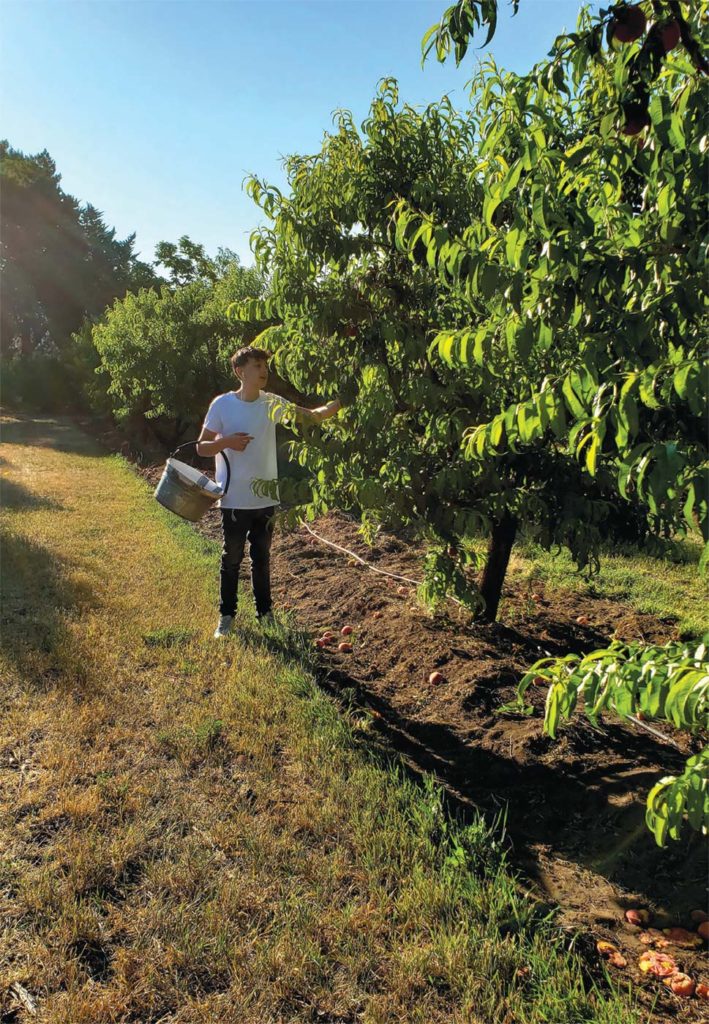
When the peaches are out in full force and the pumpkin blossoms are being pollinated, one of my favorite things to do is to take walks through the sunkissed orchard at sunrise.
FOUR DECADES OF PUMPKINS
This autumn will mark the fortieth year for the Hunter Orchards pumpkin patch, which has a well-established customer base. People who visited when they were children are now bringing their kids and grandkids, and we are seeing second and third generations enjoying Hunter Orchards. To prepare for patch-goers, Julie and I start transplanting the pumpkins, squash, and gourds in early June. Pumpkin is a warm-season vegetable that can be grown throughout much of the United States. It is also a very tender vegetable; the seeds do not germinate in cold soil, and the seedlings can be injured by frost. We only plant when all danger of frost has passed and the soil has thoroughly warmed. The pumpkin patch is on a drip system, which enables us to water all our crops at once. We weed the patch all summer long, either with the tractor or by hand, and enjoy watching the pumpkins and squash start to blossom. As new blossoms open each day, the bees land only inside the open blossoms.
The first flowers are almost always male. The pollen on these first male flowers attracts bees and alerts them to the location of the blooming vines. By the time the first female blossoms open, the bee’s route is well established, and the male flowers’ pollen is transferred to the female flowers by the bees. It is the female flowers’ fruit that makes the pumpkins and squash. Hunter Orchards is home to two beehives, which ensure proper pollination of the pumpkins, squash, and fruit trees.
When the peaches are out in full force and the pumpkin blossoms are being pollinated, one of my favorite things to do is to take walks through the sun-kissed orchard at sunrise. Knowing everything the humble peach tree goes through to produce fruit makes it so special, and we treasure our harvest for the bounty we receive and the new friends we make along the way.
This is the second in a four-part series, in which the Ericksons describe seasonal changes and their activities each season as they farm their certified organic acres. The couple own Hunter Orchards, in Grenada, just northwest of Mount Shasta, and they grow organic peaches, nectarines, apricots, apples, and pears, lavender, and heirloom pumpkins. Learn more about Hunter Orchards, including about their on-farm offerings, at hunterorchards.com and on their Facebook page: facebook.com/hunterorchards
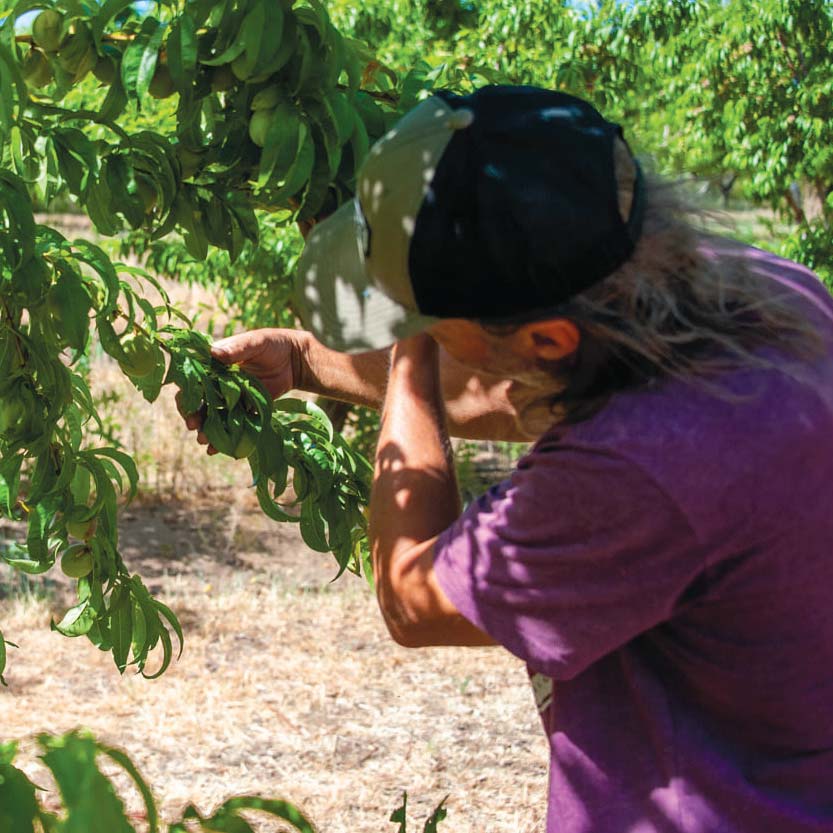
Erik and Julie Erickson own Hunter Orchards, in Grenada, just northwest of Mount Shasta, and they grow organic peaches, nectarines, apricots, apples, and pears, lavender, and heirloom pumpkins. Learn more about Hunter Orchards, including about their on-farm offerings, at hunterorchards.com and on their Facebook page: facebook.com/hunterorchards



